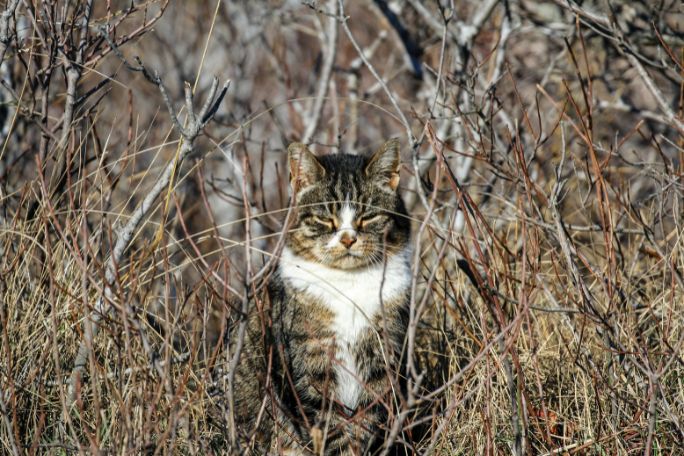Lesson summary
Introduced species are a huge problem in Australia. They can outcompete native species, and introduced predators can take advantage of prey that haven’t adapted to their presence.
In this lesson, students will cover a number of case studies analysing the ways introduced species can outcompete native species and the negative impact introduced species have had on Australian plants and animals, of which Lord Howe Island is just one example. They will then write a persuasive letter to inform and convince influential members of the community to join Lord Howe Island’s conservation efforts and continue the fight against introduced species across all of Australia.
Learning intentions:
Students will...
- understand how introduced species outcompete native species
- understand how specific introduced species have negatively affected native plants and animals in Australia.
Success criteria:
Students can...
- think critically to evaluate primary and secondary sources explaining the damage caused by introduced species
- apply their knowledge through practical, real-world tasks by writing informative and persuasive texts to inspire change.
Lesson guides and printables
Lesson details
Curriculum mapping
Australian Curriculum content descriptions:
Year 8 Geography:
- Human causes and effects of landscape degradation (ACHGK051)
- Ways of protecting significant landscapes (ACHGK052)
- Evaluate sources for their reliability and usefulness and select, collect and record relevant geographical data and information, using ethical protocols, from appropriate primary and secondary sources (ACHGS056)
- Present findings, arguments and ideas in a range of communication forms selected to suit a particular audience and purpose; using geographical terminology and digital technologies as appropriate (ACHGS061)
- Reflect on their learning to propose individual and collective action in response to a contemporary geographical challenge, taking account of environmental, economic and social considerations, and predict the expected outcomes of their proposal (ACHGS062)
Year 10 Science:
- The theory of evolution by natural selection explains the diversity of living things and is supported by a range of scientific evidence (ACSSU185)
- Communicate scientific ideas and information for a particular purpose, including constructing evidence-based arguments and using appropriate scientific language, conventions and representations (ACSIS208)
Syllabus outcomes: GE4-2, GE4-3, GE4-5, GE4-7, GE4-8, SC5-14LW, SC5-9WS
General capabilities: Literacy, Critical and Creative Thinking, Personal and Social Capability
Cross-curriculum priority: Sustainability
Relevant parts of Year 8 Geography achievement standards:
Students explain geographical processes that influence the characteristics of places and explain how places are perceived and valued differently. They explain interconnections within environments and between people and places and explain how they change places and environments. They compare alternative strategies to a geographical challenge, taking into account environmental, economic and social factors. Students evaluate a range of primary and secondary sources to locate useful and reliable information and data. Students present findings, arguments and ideas using relevant geographical terminology and digital technologies in a range of appropriate communication forms. They propose action in response to a geographical challenge, taking account of environmental, economic and social factors, and predict the outcomes of their proposal.
Relevant parts of Year 10 Science achievement standards:
Students evaluate the evidence for scientific theories that explain the origin of the universe and the diversity of life on Earth. They explain the processes that underpin heredity and evolution. They construct evidence-based arguments and select appropriate representations and text types to communicate science ideas for specific purposes.
This lesson is part of the wider unit of work Lord Howe Island – Years 8 & 10
Time required: 90 mins
Level of teacher scaffolding: Medium – facilitate class discussion and groupwork
Resources required
- Device capable of creating presenting a video to the class
- Devices capable of reading articles online – one per student. Alternatively, print out physical copies of the articles found below for students
- Student Worksheet – one copy per student
Skills
This lesson is designed to build students’ competencies in the following skills:
- Communication
- Community engagement
- Critical thinking
- Problem solving
- Social skills
- Collaboration
Additional info
If you would like to access additional information about Joshua Yeldham and the photographs of his wonderful exhibition 'Providence'. Please visit the Arthouse Gallery website: Joshua Yeldham - Providence (arthousegallery.com.au/exhibitions/joshua_yeldham/providence) and the artist's website: Joshua Yeldham (www.joshuayeldham.com.au) for exhibitions and his wonderful book: Surrender (joshuayeldham.com.au/the-books). Providence and Surrender were completed during and after his Artist Residency on Lord Howe Island and during his stay at the Capella Lodge (capellalodge.com.au) on Lord Howe Island.


Welcome back!
Don't have an account yet?
Log in with:
By signing up to Cool.org you consent and agree to Cool's privacy policy to
store, manage and process your personal information. To read more, please see
our privacy policy here(Opens in new tab).
Create your free Cool.org account.
Many of our resources are free, with an option to upgrade to Cool+ for premium content.
Already have an account?
Sign up with:
By signing up to Cool.org you consent and agree to Cool's privacy policy to
store, manage and process your personal information. To read more, please see
our privacy policy here(Opens in new tab).